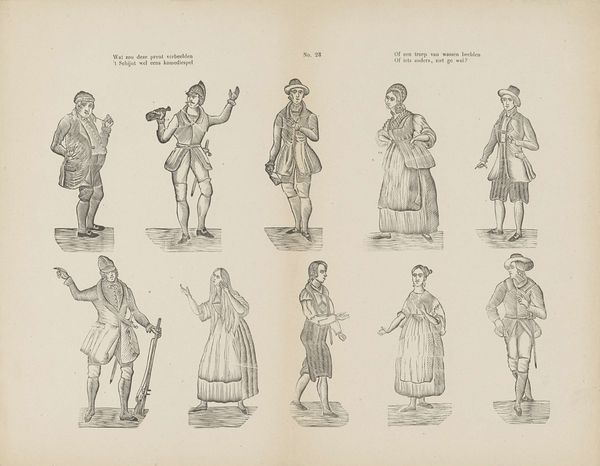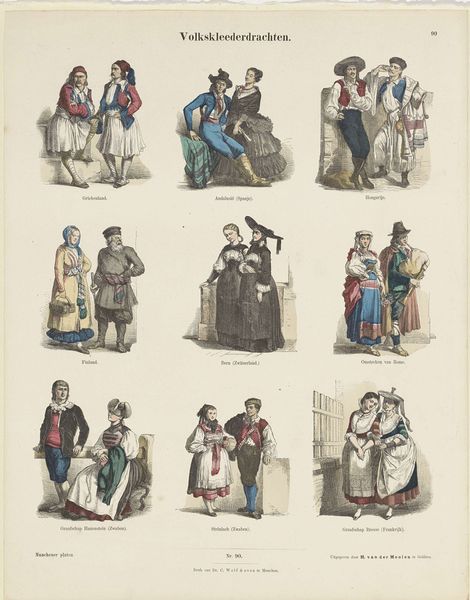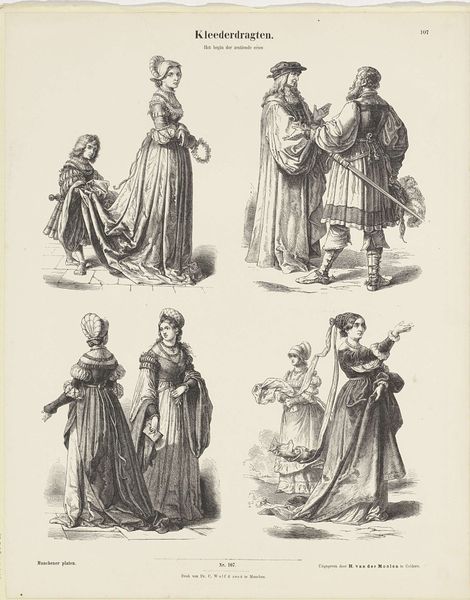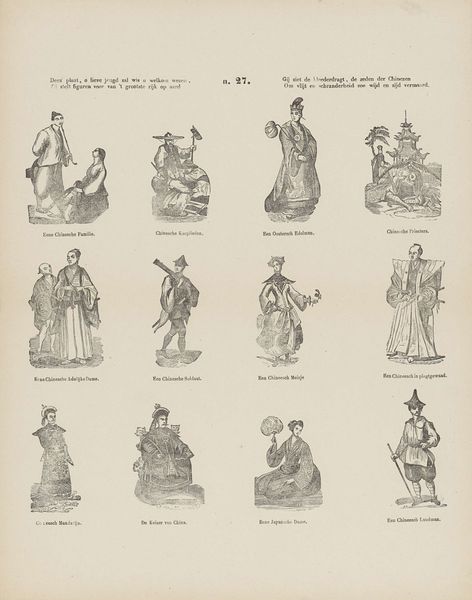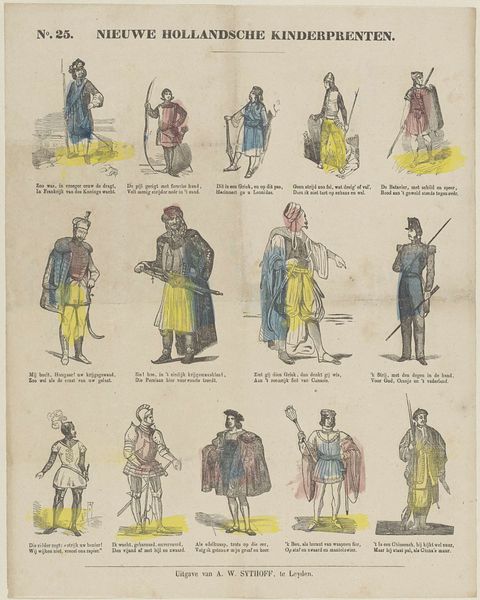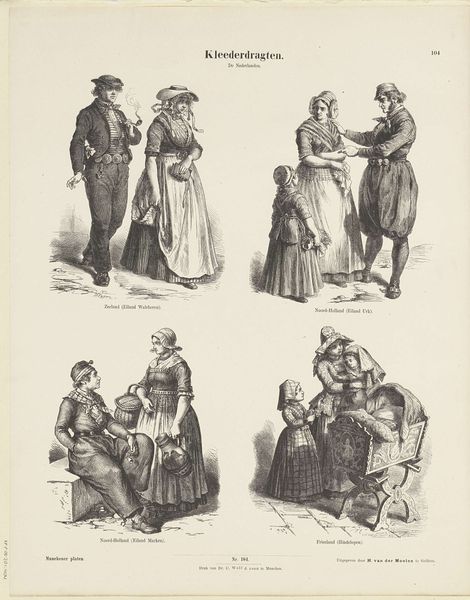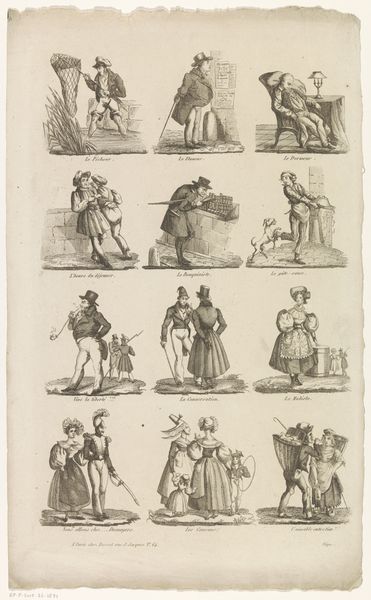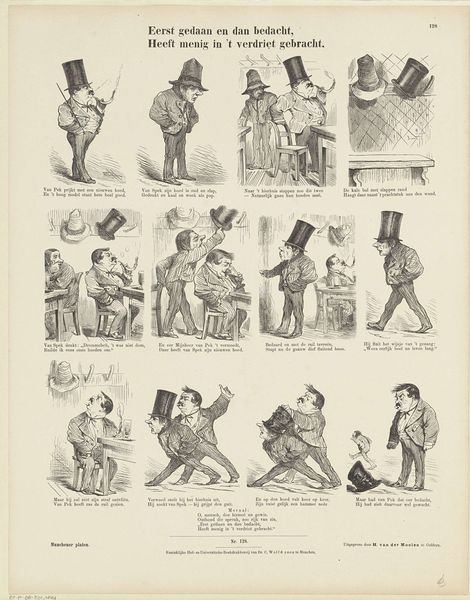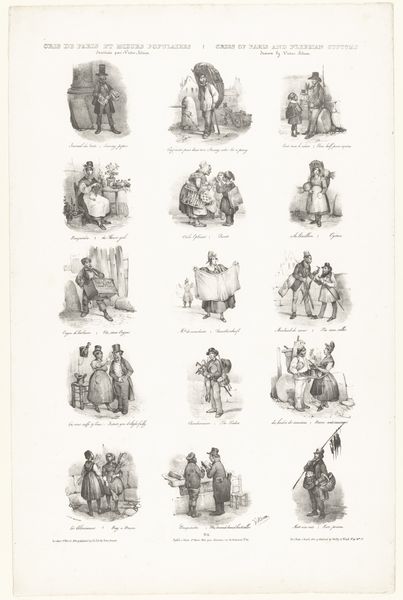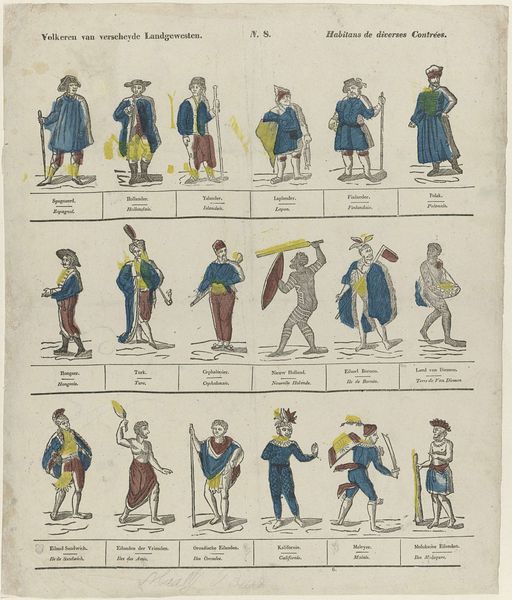
print, engraving
#
portrait
#
comic strip sketch
#
imaginative character sketch
#
light pencil work
#
quirky sketch
# print
#
figuration
#
personal sketchbook
#
idea generation sketch
#
sketchwork
#
sketchbook drawing
#
genre-painting
#
storyboard and sketchbook work
#
sketchbook art
#
engraving
Dimensions: height 445 mm, width 350 mm
Copyright: Rijks Museum: Open Domain
Editor: This engraving from around 1843 is titled "Volkskleederdrachten" by E. Küster. It depicts various figures in what I assume are traditional costumes. They’re all arranged so neatly. It feels almost like a catalog. What do you see in this piece? Curator: It's fascinating to consider this work as an attempt to archive or categorize "folk costumes" at a specific historical moment. How might we interpret this act of visual documentation through the lens of colonialism and the construction of identity? Notice how each grouping is labeled by region. Editor: That’s interesting… So you're saying this isn’t just a record of clothes? Curator: Exactly. What does it mean to classify and present cultures in this way, particularly from a European perspective in the 19th century? Consider the power dynamics at play when one culture observes and documents another. The print also serves as an indication of what was valued. Which cultural elements are selected, emphasized, and then circulated? What message does that broadcast? Editor: I see what you mean. The very act of creating a “type” seems like it could erase individual identities within these cultures. Curator: Precisely! The costumes become stand-ins for entire cultural groups, potentially flattening nuanced identities into easily digestible visual representations. How does that inform our contemporary understanding of cultural appropriation and representation? Editor: I never thought about it that way. I was so focused on the detail of the clothing itself! Now, I see the power and potential issues in creating a visual record like this. Curator: It highlights the need for a critical examination of how images shape our perceptions and reinforces the idea that what we choose to represent and how has serious political implications.
Comments
No comments
Be the first to comment and join the conversation on the ultimate creative platform.
